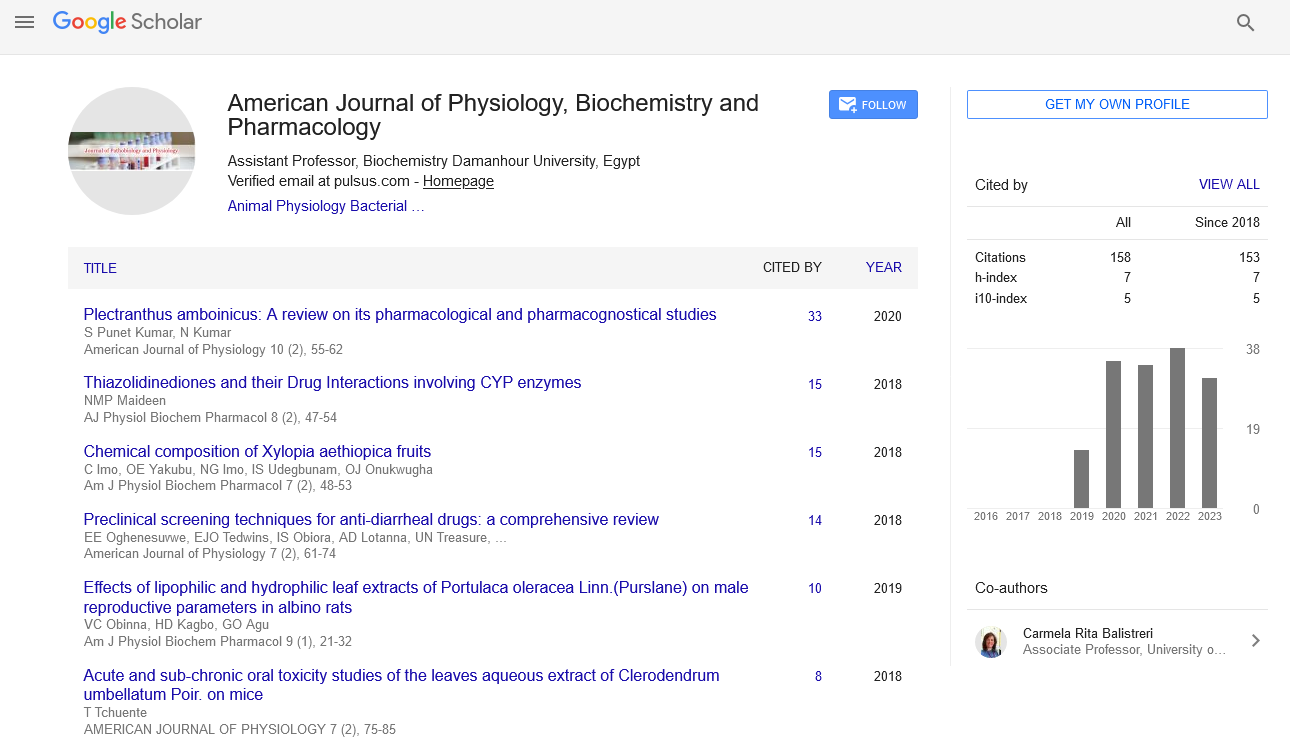Acute and sub-chronic oral toxicity studies of the leaves aqueous extract of Clerodendrum umbellatum Poir. on mice
Abstract
Hermine Boukeng Jatsa, Joseph Bertin Kadji Fassi, Mérimé Christian Kenfack, Nestor Gipwe Feussom, MireillePoumeni Kameni, Nadège Distele Simo, Emilienne Tienga Nkondo, Alain Bertrand Dongmo, Louis-Albert Tchuem Tchuente
Aim: The schistosomicidal activity of Clerodendrum umbellatum leaves aqueous extract (CuAE) has been previously demonstrated. The present study was performed to establish the acute and sub-chronic oral toxicity profile of CuAE in mice. Methods: For acute oral toxicity study, CuAE was administered per os to female mice at a single dose of 2,000 mg/kg. Animals were observed for 14 days in order to identify the signs of toxicity or death. In the repeated dose 28-day oral toxicity study, the extract was administered daily and per os to female and male mice at doses of 200, 400, and 800 mg/kg for 28 consecutive days. A satellite group was also set up. Body weight was measured weekly. Hematological, biochemical, and histopathological parameters were analyzed. Results: CuAE at 2,000 mg/kg produced no sign of toxicity or mortality. In the sub-chronic toxicity study, no mortality, no significant change in the body weight, the relative organ weights, and the hematological parameters were recorded in all treated mice. CuAE at 400 mg/kg significantly increased transaminases activities in male mice. Except for creatinine and high-density lipoprotein-cholesterol in which concentrations are increased after administration of CuAE at 800 mg/kg, the levels of others biochemical markers didn’t change. Histopathological abnormalities found in the kidneys were reversible. Conclusion: These results indicated that the LD50 of CuAE is greater than 2,000 mg/kg and CuAE, therefore, belongs to the category five of relatively non-toxic substances. From the sub-chronic toxicity study, the no-observed-adverse-effect level of CuAE for both male and female mice was considered to be 200 mg/kg/day.






